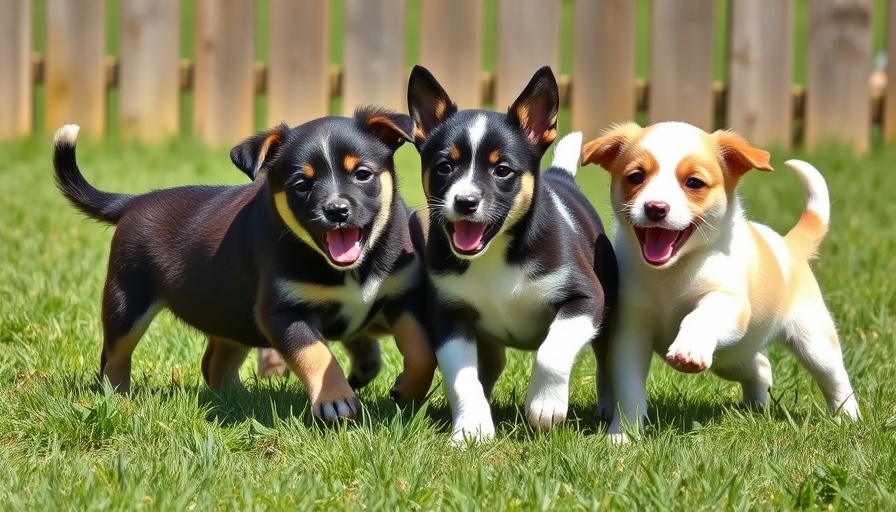
The Inspiring Transformation of My Dog, Rio
Adopting a pet brings immense joy, but it can also come with challenges, particularly if that pet is dealing with obesity. My journey with Rio, a Golden Retriever who needed to shed a considerable amount of weight, is a testament to the transformative power of love, dedication, and correct pet care strategies.
From the moment we decided to bring Rio into our home, it was clear this wasn’t going to be an ordinary adoption story. We quickly realized that Rio's weight posed challenges we were unprepared for. His joyful personality was tempered by a body that struggled with the excess weight, making even simple walks difficult. Every time he waddled up the stairs or panted after a brief stroll, it served as a reminder of the work ahead of us.
The Serious Risks of Canine Obesity
Obesity in dogs is a growing concern, impacting their health, longevity, and overall quality of life. According to research from Cornell University, excess weight can lead to numerous health issues, including joint problems and increased risk during surgical procedures. Rio’s initial Body Condition Score (BCS) classified him as obese, falling between an 8 to 9 on a scale where 4 or 5 is considered ideal. His condition posed a clear threat; medical professionals noted that obesity places stress on vital organs and increases the risk of inflammatory conditions like arthritis.
The Path to a Healthier Life
With the seriousness of Rio's health risks fresh in our minds, we embarked on a painstaking yet exhilarating journey toward weight loss. We were armed with information from studies that showed that dietary modifications and consistent exercise are critical for effective weight loss in dogs. We reached out to our veterinarian, who helped us devise a comprehensive weight loss plan tailored specifically for Rio’s needs.
Healthy changes began at our dining table. We switched his food to a specially formulated weight loss diet, which contained lower calories and higher fiber. This not only helped Rio feel satisfied while consuming fewer calories but also supported his digestive health. Portioning out his food became crucial; he was strictly regulated to ensure we didn’t inadvertently sabotage our progress.
Making Exercise Fun and Effective
Physical activity was another necessary area for improvement. Initially, our walks were brief and uneventful due to Rio's exhaustion. However, we found creative ways to keep Rio engaged and gradually increase his activity levels. On days he seemed fatigued, we incorporated play sessions using his favorite toys, which made exercise feel less like a chore and more like a fun adventure. Over time, Rio’s stamina improved significantly; where he once struggled to complete a five-minute walk, he was soon bounding around the park with energy.
A Community of Support
We learned that we weren't alone in our quest. Engaging with online communities dedicated to pet health provided us with peer support and additional tips. Connecting with other pet owners who were also working towards similar goals not only kept us motivated but also offered validation during challenging times. These shared experiences highlighted the importance of community. Together, we celebrated the small victories, from inches lost to pounds shed, encouraging each other every step of the way.
Realizing Progress and Observing Changes
Measuring Rio’s progress was both exciting and educational. Regular weigh-ins at the vet's office showed us the fruits of our labor: Rio lost around 1-2% of his body weight per week, bringing him closer to a healthier BCS. Additionally, meaningful behavioral changes were noticeable. Rio became more lively, excited for walks where he previously seemed reluctant. We learned that positive reinforcement worked wonders; rewarding him with a small training treat during our sessions made him eager to participate in exercises.
Advice for Other Pet Owners
For pet owners facing similar challenges with canine obesity, here are some key takeaways from our journey: 1) Consult with a veterinarian early on to develop a personalized plan; 2) Invest in weight loss specific diets that offer low calories and high fiber; 3) Incorporate regular physical activity incrementally; and 4) Establish a support system with fellow pet owners to stay encouraged. Every small step matters and contributes to overall health and happiness.
Conclusion: A Healthier Future Ahead
Rio's weight loss journey is more than just a tale of transformation; it embodies the bond between pet and owner, reminding us of our responsibility to ensure their well-being. His remarkable progress was only possible through a comprehensive approach combining diet, exercise, community support, and, most importantly, love. Whether you have a newly adopted dog like Rio or an older pet needing a little help, know that positive change is always within reach.
Are you ready to embark on a similar journey with your furry companion? Share your story, gather inspiration, and take those first steps toward a healthier future together!
 Add Row
Add Row  Add
Add 




Write A Comment